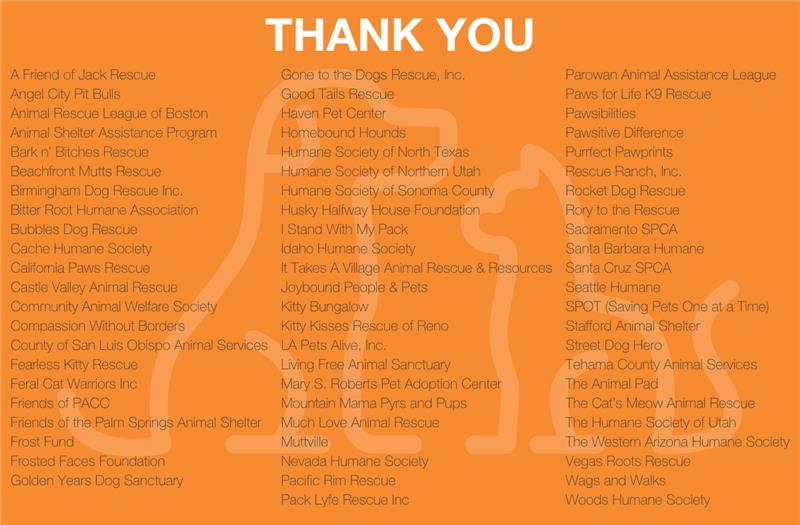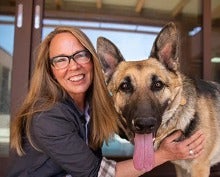An unexpected reprieve in shelters after the L.A. wildfires

As our Best Friends Los Angeles team unloads a van full of adoptable dogs, everyone is giddy to welcome this latest group of four-legged friends into the Best Friends Pet Adoption Center in West L.A. It’s January 23, and Best Friends has been working through the Los Angeles wildfires for more than two weeks.

Evelyna is the last dog to leave the van — she’s the shyest of today’s transport group from the Lancaster Animal Care Center, part of Los Angeles County Animal Care. Our team took in Evelyna and a dozen other dogs from Lancaster to make room for lost and displaced pets from the Hughes fire, which broke out the day before on January 22. As soon as Evelyna stepped out of the shelter walls there, our team described her as looking forward with these eyes of fire — a timely, and accurate, analogy. While the Lancaster shelter remained outside of the fire’s perimeter, neighbors nearby were quickly being evacuated. Our team and the Lancaster team had to act fast. Evelyna and the other dogs’ move to Best Friends was crucial to give dogs directly affected by the fire a chance for reprieve — for a safe, temporary landing at Lancaster.

A look back at the Los Angeles wildfires
Evelyna’s move out of harm’s way of the Hughes fire was just one of many that we conducted over the course of the recent Los Angeles wildfires. Through the Palisades, Eaton, and Hughes fires, Best Friends was able to move more than 1,700 animals out of L.A.-area shelters thanks to our partners around the country, donors, members, and, of course, the people of Los Angeles.
We offered stipends to partner organizations, enabling them to move about 1,200 dogs and cats out of L.A.-area shelters and into their own programs, freeing up space for lost and displaced pets from the fires and giving 1,200 more a new chance to be adopted or fostered into loving homes in places like the mountains of Colorado, the sounds of Seattle, and the fields of Iowa.

Wings of Rescue, the Philadelphia Eagles, and other donors raised their hands to move more than 300 dogs and cats by plane around the country. Most of the dogs and cats on those plane rides were transferred into our sanctuary in Kanab and our lifesaving centers in Salt Lake City and New York City, while others were taken into partners’ programs on the East Coast.
While emergency response efforts are not new to Best Friends, these efforts in particular mark the first time that Best Friends not only was helping partner organizations impacted by a natural disaster but also had one of our own lifesaving centers at risk. As a result, we were taking pets into our care while being prepared to evacuate at any moment — which meant heavily relying on foster homes. And, in a wondrous showing of humanity, Angelenos showed up in droves, filling the lobby of the Best Friends Pet Adoption Center after hours to foster or adopt. In total, the people of Los Angeles stepped up in record numbers and temporarily fostered or adopted 552 pets into their own homes, even as the potential that they themselves would have to evacuate loomed.

To help Los Angeles residents, we set up two Best Friends pet pantries stocked with everyday pet essentials thanks to donations from various companies and kindhearted people from across the United States. In all, we distributed more than 20,000 pounds of pet food and supplies to about 400 families in need. This effort would not have been possible without our exceptional volunteers who jumped in to organize and run the pet pantries. They extended kindness, understanding, and love to all who came in. Huge kudos to those volunteers!
Lastly in our efforts, Best Friends was one of several animal welfare organizations that partnered with Petco Love to temporarily deploy staff to all six Los Angeles Animal Services shelters. There, our staff worked alongside LAAS staff, with a focus on saving as many dogs and cats as they could by helping to facilitate lost pet reunification, promote fostering and adoptions, and remove barriers for volunteers. These initiatives are critical in a disaster to maximize a shelter’s limited resources — but they also have long-term benefits if the shelter maintains that programming after our team leaves, as these are the core programs that make up a no-kill strategy.

No-kill programming is key
The work I’ve outlined above shows that no-kill programming works. Transports, dynamic adoption and fostering promotion, embedding into shelters to impart operational best practices, providing pet supplies to families in need to help keep pets in homes, and using a network of organizations to move pets out of municipal shelters — these are tactics of no-kill that prove it works. It works on a regular Tuesday in shelters across America, and it works during natural disasters like hurricanes and wildfires.
In any circumstance, we can avoid killing animals by implementing lifesaving programming. The proof is in the numbers. When these programs are used effectively during a disaster and continued afterward, lifesaving not only doesn’t backslide, it improves. I am, and Best Friends is, committed to the animals of Los Angeles. We’re continuing to work with the city in this time of recovery to ensure they continue to implement no-kill tactics, improving the safety and the well-being of animals in their care.
Thank you to every one of you who supported our efforts through the Los Angeles wildfires. From sharing on social media to adopting a pet, you made this all possible. From the bottom of my heart, thank you. Let’s keep up the good work.
-Julie
